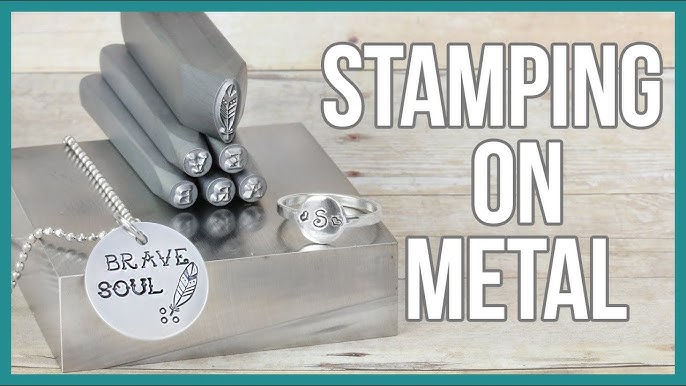Advanced Metal Stamping Approaches for Accuracy Production
Advanced Metal Stamping Approaches for Accuracy Production
Blog Article
Metal Marking Technologies: Elevating Manufacturing Processes for Superior Results
In the realm of manufacturing processes, metal stamping has long been a foundation strategy for creating a variety of precision elements. With the relentless march of technical development, the landscape of metal stamping is undergoing a significant improvement.
Development of Steel Marking Methods

Additionally, innovations in product science have actually caused the development of high-strength alloys that can currently be seamlessly marked right into detailed forms, satisfying a wider series of commercial applications. The integration of robotics and expert system has additionally maximized the marking procedure by enhancing speed and accuracy while minimizing the risk of human mistake.

Influence of Advanced Materials
Have advanced materials transformed steel marking procedures dramatically in the manufacturing sector? The response is a resounding yes (Metal Stamping). The assimilation of advanced materials has actually changed metal stamping, making it possible for suppliers to accomplish higher accuracy, raised performance, and improved item high quality. By utilizing products such as high-strength alloys, advanced compounds, and innovative coverings, metal marking processes can currently produce parts that are lighter, stronger, and more sturdy than ever.
These sophisticated products supply superior mechanical properties, corrosion resistance, and thermal stability, enabling suppliers to fulfill the demands of contemporary markets such as aerospace, vehicle, and electronic devices. Additionally, using innovative materials in metal marking has assisted in the production of complicated geometries and intricate layouts that were previously unattainable with typical approaches.
Furthermore, the implementation of advanced products has actually led to decreased material waste, lower production costs, and shorter preparations, making steel marking processes much more affordable and lasting. As modern technology proceeds to advancement, the influence of innovative products on metal marking processes is anticipated to drive additional development and boost the competition of producers in the international market.
Automation in Steel Stamping
The development of metal stamping procedures driven by the combination of advanced products has actually set the phase for considerable innovations in automation within the production market. Automation in metal marking has actually transformed production procedures, improving effectiveness, precision, and overall result high quality. Through the usage of robotics, sensing units, and computer-controlled systems, jobs that were when manual and taxing can currently be executed with unrivaled rate and precision.
Automation in metal marking not just increases production prices however also makes sure consistency in the production process. By lessening human intervention, the danger of mistakes is substantially decreased, bring about greater degrees of product harmony and dependability. In addition, automation allows manufacturers to undertake intricate stamping tasks that would certainly be difficult or unwise to achieve by hand.
Additionally, automation in metal stamping adds to a safer working environment by minimizing the demand for employees to participate in repetitive or hazardous jobs - Metal Stamping. This shift in the direction of automation not just boosts productivity yet likewise leads the way for the future of production, where technology plays a central duty find more info in driving functional excellence
Quality Assurance and Assessment Equipments
With a focus on accuracy and integrity, quality assurance and evaluation systems play a crucial function in ensuring item quality in steel marking procedures. These systems are created to check every phase of manufacturing, from product evaluation to the end product, to assure that all parts meet the needed requirements. By applying advanced innovations such as optical examination systems, coordinate determining machines (CMM), and automated assessing tools, producers can spot even the tiniest inconsistencies in measurements, surface high quality, and overall integrity of stamped components.

Sustainability Practices in Metal Stamping
Building upon the foundation of precision and dependability established with top quality control and evaluation systems, the integration of lasting techniques in steel marking procedures is increasingly ending up being a centerpiece for makers looking for to minimize ecological effect and maximize source usage. Sustainability techniques in steel stamping include a variety of efforts focused on lowering waste generation, power usage, and greenhouse gas emissions throughout the production procedure.
One key aspect of sustainability in steel stamping is the fostering of environment-friendly materials and innovations that promote recyclability and waste reduction. By using recycled products and applying energy-efficient equipment, manufacturers can decrease their carbon footprint and add to a more lasting manufacturing cycle. Additionally, enhancing manufacturing procedures to lessen material waste and energy use not just benefits the setting yet also brings about set you back savings for companies over time.
In addition, the implementation of sustainable methods in metal stamping can improve brand online reputation and allure to eco aware consumers. As sustainability remains to acquire significance in the production sector, integrating environment-friendly campaigns into metal stamping procedures is necessary for long-term success and you can try this out competitiveness in the market.
Conclusion
Finally, metal marking strategies have significantly progressed gradually, including sophisticated materials and automation to improve manufacturing procedures. Quality assurance and assessment website here systems play a critical duty in ensuring superior outcomes, while sustainability methods are progressively being executed to reduce ecological effect. These innovations in steel marking have changed the market, causing much more reliable and lasting manufacturing methods for numerous industries.
Steel marking, when a manual and labor-intensive procedure, has transformed into a highly automated and sophisticated approach of forming steel sheets right into different types and styles.Have innovative materials transformed metal marking procedures significantly in the manufacturing market? By using products such as high-strength alloys, progressed composites, and cutting-edge coatings, metal marking procedures can now create components that are lighter, stronger, and more sturdy than ever previously.
The development of steel stamping procedures driven by the integration of innovative products has established the phase for significant improvements in automation within the production market.In conclusion, metal marking techniques have dramatically evolved over time, incorporating sophisticated materials and automation to boost manufacturing procedures.
Report this page